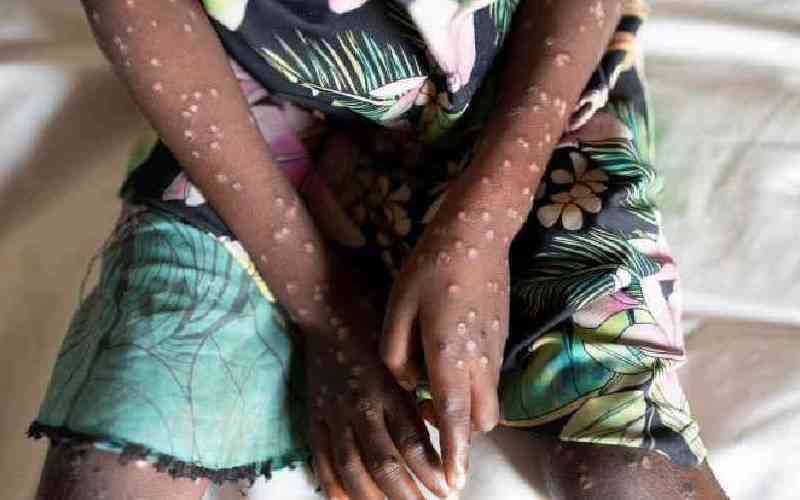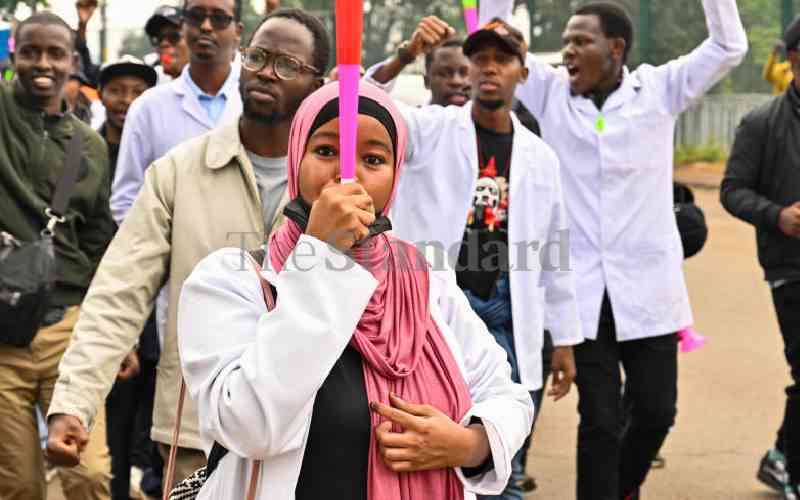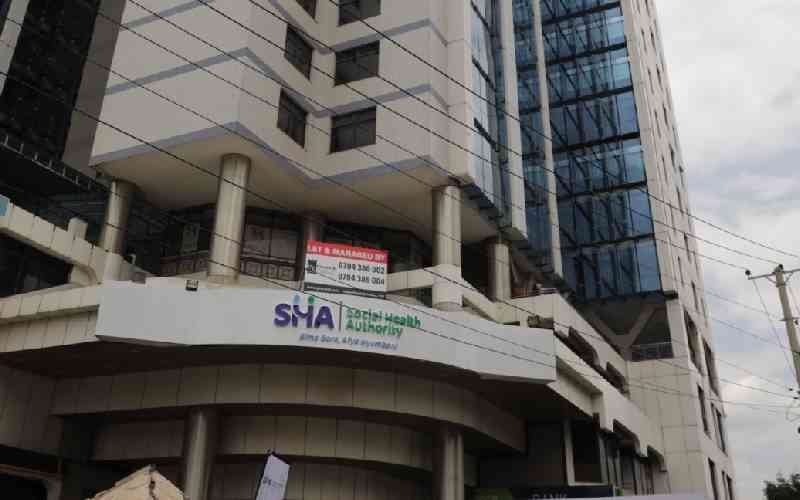
The number of people diagnosed with cancer has doubled in the last five years.
In 2012, there were 20,000 reported cases, but the number has risen to 40,000 annually. In spite of these grim numbers, the Government remains unmoved in its war against the disease that ranks third in the list of top killers in the country.
To date, a law passed five years ago meant to improve diagnosis, treatment and care of patients remains ineffective due to what investigations by the Saturday Standard reveals as non-commitment from the State.
This is tragic for about 109 people who walk into health facilities every day with one ailment or another, only to be told about what could potentially be a death sentence. And these are the lucky ones.
“The majority of cancer cases go undiagnosed. The figures we are working with are only anecdotal,” David Makumi, the chairman of the Kenya Network of Cancer Organisations, says.
Government response to what is slowly building up to a health disaster can only be qualified as farcical.
In 2012, Parliament passed the National Cancer Control and Prevention Act which, among other things set in motion the creation of a National Cancer Institute (NCI), a semi-autonomous centre for research, diagnosis and treatment of cancer.
Improve survival rates
But the burble was not to last. The air of hope that offered some bit of hope to the thousands of cancer patients was not to last. It took three years for the NCI to be formally created, an acting chief executive appointed and a board of directors set up.
Today, five years after passing of the bill, NCI remains with only one employee, seconded from the Ministry of Health. It has no physical office and no other staff.
State officers we spoke to, say there is little will from the Government to implement programmes conceptualised as far back as 2011 that would have gone a long way to help in the fight against cancer.
In 2011, the Ministry of Health came up with the National Cancer Control Strategy, a five year roadmap outlining broad areas of action in the cancer fight. Its goal was to reduce cancer incidence, morbidity, mortality and improve survival rates in the country.
Another key objective from the 2011 strategy was to establish new and improve existing cancer treatment centres.
“Establish and equip regional and sub- regional cancer treatment centres based on set guidelines,” the strategy says. This also included the equipping of hospitals throughout the country.
Five years later, little of that action plan has been put in place. In July this year, the 2017- 2022 national cancer control strategy was launched, its objectives and deliverables eerily mirroring our country’s ambitions from 2011to fight the disease.
“The war on cancer is happening in a time wrap,” Makumi says. “We never seem to move.”
The 2017- 2022 strategy plan reads thus:
“To reduce cancer incidence, morbidity, mortality and survival rate in Kenya through access to population based primary prevention, early detection, quality diagnostics treatment and palliative care services by the year 2022.”
Over the period of this strategy, at least 200,000 more people will have been diagnosed with a form of cancer.
Yet as government dithers, there are hospitals that have sought partnerships to try and bridge the gap left by a government grappling with prioritising needs of its population.
In 2015, the Moi Teaching and Referral Hospital (MTRH) secured funding to set up a new cancer treatment centre at the hospital grounds. The only caveat on the deal was that the central government purchases and equips the new hospital wing with a radiology machine.
Three years later, the bunker specially built to accommodate the radiotherapy machine remains a gaping hole. The machine is yet to be purchased and installed, the only other machine in the hospital stretched to capacity, with frequent breakdowns interrupting life and death treatment regimens.
Even after this miss in Eldoret, the series of unfortunate events and costly bungling by government, at both national and county levels continued.
A year after the MTRH debacle, a tough talking President Uhuru Kenyatta ordered counties to agree to an equipment lease agreement with county governments.
In his Madaraka Day speech that same year, the President insisted that the supply of Sh38 billion national government-backed medical equipment to county hospitals would continue, at the back of a three- month long push and pull with governors opposed to the move.
Consistent breakdowns
“Soon, a hospital near your home will be well-equipped. You will not have to travel to Nairobi or overseas for specialised treatment,” he said in his speech.
The initiative, though noble, fell on its face. Challenges of staffing and general hospital needs fell far off the services to be provided by the machines provided by government.
As the government continued to spend billions on the leases, questions continued to be asked on what was being done for Kenya’s third leading cause of death. Investigations reveal that very little was happening.
Research had stagnated. Trained specialist left public service for greener pasture in the private field in Kenya and abroad. Consistent breakdowns in radio therapy machines in public hospitals meant more suffering for the patients.
Yet close to no investment was put into cancer care.
A World Bank Feasibility study in our possession shows that the establishment of a functioning cancer screening and treatment centre would cost between Sh1.5 and Sh2 billion shillings, far cry from the close to Sh40 billion spent on equipment lease.
Over the past ten years, Kenya’s budget has ballooned from Sh693 billion in the 2007/2008 financial year to Sh2.4 trillion in the 2017/2018 financial year. Allocation to the Ministry of Health budgets stood at Sh34.4billion ten years ago to the current Sh54.9 billion.
Since 2013, the current government has initiated mega development and infrastructure projects running in to trillions of shillings. At completion, Phase I of the Standard Gauge Railway cost Sh380 billion, of course with financing from the Chinese government. Financing has been secured for the second phase of the project. The Eurobond, intended at creating a cash cushion for the government, ended up haemorrhaging Sh215 billion in unaccounted for funds.
Late last year, an internal Ministry of Health audit revealed a Sh5 billion hole in the ministry books. This alone would be enough to set up two state of the art cancer treatment centre to support the existing overburdened facilities at Kenyatta National Hospital and at the MTRH.
Financing has also been secured of other energy projects including the Lamu Coal plant project. As this goes on, critical areas in Kenya’s health sector are still largely dependent on donor aid.
At the moment the a few public facilities that can diagnose and treat cancer cases including Kenyatta National hospital and MTRH.
Others like Nyanza, Mombasa and Nyeri provincial hospitals can provide chemotherapy while majority of the level five institutions can handle diagnosis only despite the Sh38billion equipment leasing by the government.
Dr Catherine Nyongesa an oncologist at Texas Cancer Center, says the cost of diagnostic services such as CT scans, MRI, ultrasound and radio-isotopes scans and treatment for stage one costs sh250,000.
“When the diagnosis indicate that it’s at stage two, three or four, it goes up with the cost. depending on which time of cancer once it is on the last stage it would require between sh1 to 5million for treatment within or outside the country,” says Dr Nyongesa.
She admits that the cost of treatment in the country was exorbitant compared to India and other Asian countries.
One reason for the high cost of the treatment is because of the few number of oncologists currently in the country. At the moment according to Dr Nyongesa, there are about twenty oncologists for a population of over 40million people.
“But there is a huge improvement, about six years ago there were only about eight specialised doctors on cancer. There is need to increase the number if the country was to diagnose and treat the disease in the early stages,” says Dr Nyongesa.
Makumi says 60 per cent of Kenyans affected by cancer are below 70 years and with 70 to 80 per cent of cancer cases diagnosed in late stages due to lack of awareness, inadequate diagnostic facilities, lack of treatment facilities and high cost of treatment.
Studies by the Kenya Medical Research Institute indicate that cancer is the third cause of death after infectious and cardiovascular diseases. “We record about 250 to sometimes 500 cases of cancer in a month, this is quite alarming and shows the increase in the disease prevalence,” said Dr Nyongesa.
Breast and cervical for women, prostate and throat for men and leukaemia and brain cancers for children She explains are more prevalent across the country. “The cases recorded are no longer from the old people or the well to do in the society, but people from all walks of life, it is affecting the young and old alike,” Dr Nyongesa says.
The 2017-2022 National Cancer Control Strategy remains as ambitious as its predecessor from 2011.
“The cliché of Kenya having the best policies on paper continues,” Makumi says. The long queues at public hospitals grow longer each day as patients continue to pray for miraculous victories in their personal battles with cancer.
 The Standard Group Plc is a multi-media organization with investments in media platforms spanning newspaper print
operations, television, radio broadcasting, digital and online services. The Standard Group is recognized as a
leading multi-media house in Kenya with a key influence in matters of national and international interest.
The Standard Group Plc is a multi-media organization with investments in media platforms spanning newspaper print
operations, television, radio broadcasting, digital and online services. The Standard Group is recognized as a
leading multi-media house in Kenya with a key influence in matters of national and international interest.











